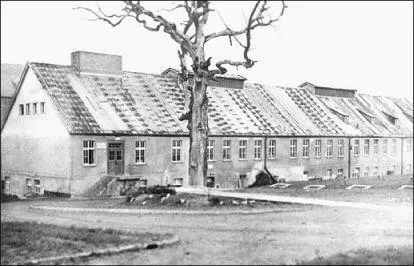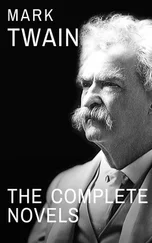An early mention of “Faust” turns up in a letter sent from one Trithemius, abbot of Würzberg and noted occultist, to Johann Virdun, an astrologer in Heidelberg. Dated August 20, 1507, the letter warns against a “Magister Georgius Sabellicus, Faustus junior,” who has been passing himself off as the “prince of necromancers.” Six years later, in 1513, there is a mention of a “Georgius Faustus,” who is now described as “cheiromancer,” or palm reader, supposedly operating in Erfurt, fifteen miles from Weimar. This was followed, in 1587, by the first of the “Faust books,” under the all-inclusive title History of Dr. Johann Faust, the notorious Magician and Necromancer, how he sold himself for a stipulated Time to the Devil, What strange Things he saw, performed and practised during this Time, until at last he received his well-merited Reward. A popular hit, it was widely read in Weimar, as was the later Christopher Marlowe adaption of the legend. Goethe’s version signified something of a homecoming for the Faust story.
One hundred and ten years later, in the spring of 1937, Theodor Eicke, the Obergruppenführer of the Waffen-SS Totenkopf Death’s Head division, and Fritz Sauckel, soon to be in charge of the largest contingent of forced workers since the African slave trade, sought to pay tribute to Goethe. As they cleared the Ettersberg forest for the construction of the Buchenwald camp, where fifty-six thousand people would die before April 1945, they ordered that one large oak be left standing. This was said to be Goethe’s Eiche, or Goethe’s Oak, the very tree under which the great poet had written his great work. The camp, at the time the largest in the Reich, was built around the tree. It was an arbitrary decision on Eicke’s part. After all, there was no way of knowing which oak Goethe had actually sat under; the Ettersberg is full of the trees. Indeed, in Conversations of Goethe, Eckermann recounts how Faust ’s author carved his initials into not an oak but a beech tree, the dominant species in the forest (the name Buchenwald, chosen by SS leader Heinrich Himmler, means beech forest). But a beech is a spindly thing compared to an oak. Its roots do not plumb as deeply into the earth, its wood is not as hard, its fruit is not so plentiful.
For the Nazis, it was important to lay claim to the poet’s legacy. Hitler himself had sat beside these same trees. The Führer loved— and was loved in—Weimar and the Thuringia state that surrounds it. A grand hub of Western culture for three centuries, onetime home to Martin Luther, Friedrich von Schiller, Franz Liszt, Johann Sebastian Bach, Friedrich Nietzsche, Richard Strauss, Paul Klee, Wassily Kandinsky, Hector Berlioz, Arthur Schopenhauer, Walter Gropius, Rudolf Steiner, Marlene Dietrich, and Richard Wagner, Weimar was an early center of Nazi popularity. In 1926, following Hitler’s release from prison after the Munich Beer Hall Putsch, when he was prohibited from speaking in much of the country, Weimar welcomed him. Before becoming chancellor, he often addressed crowds in front of his beloved Hotel Elephant. In 1933 the Nazis won a majority of the votes in the area. It was here that the Hitlerjugend, the Hitler Youth, was organized. To the Führer, the Thuringian hills, and the great works produced there, were “the embodiment of the German spirit.”
A truly new society, especially one as revolutionary as that envisioned by the Nazis, could not spring from nowhere, based on abstract ideas alone. Goethe’s Oak provided a powerful foundation for a perfect ancestral line, unsullied by the “bacillus” the concentration camp was designed to weed out. Here was Nature’s own living icon, connecting the glorious German past to the magnificent thousand-year future to come.
But iconography, fudged or not, can be difficult to control, even for Nazis. If Goethe’s Oak represented for the SS a connection to a more perfect blood and soil, it also held special significance for the Buchenwald prisoners.
This owed to the singularity of the Buchenwald camp. Central hub to dozens of smaller, satellite prisons in the immediate area, Buchenwald was considered a “mild” camp in comparison to the death factories to the north and east. Buchenwald inmates might expire in the quarry, be starved to death, or perish from rampant disease, but straightforward murder, the shot to the back of the head, was never the intended purpose of the place. The population was diverse, including a high proportion of educated, often well-known inmates. Over the course of its eight-year existence, the once and future French prime minister Léon Blum, child psychologist Bruno Bettelheim, Jakob Rosenfeld, who would become Mao Zedong’s personal physician and health minister, historian Christopher Burney, Albin Grau, producer of F. W. Murnau’s film Nosferatu, French sociologist Maurice Halbwachs, aviation pioneer Marcel Dassault, future Nobel laureates Léon Jouhaux and Imre Kertész, Netherlands prime minister Willem Drees, Elie Wiesel, and Princess Mafalda, daughter of King Victor Emmanuel III of Italy, were imprisoned at Buchenwald.
These people knew who Goethe was. They’d read Faust . They had their own interpretations of how and why humanity makes its deals with supernatural evil. Goethe’s story was so big that everyone in the camp could envision its author on their side. So when the anointed oak burst into a pillar of fire during the Allied bombing of the camp in July 1944, inmates and SS guards alike rushed to hoard flaming chips of pith and bark, collaborating for a moment, in hopes of salvaging pieces of the once-mighty tree.
The stump remains at Buchenwald today, to be seen by those who visit this forlorn place.
• • •

Buchenwald, Goethe’s Oak, 1943
The journey to wartime Buchenwald has been described as an interminable winter train trip, prisoners shoved so tightly into a wooden cattle car that their skin froze to the person next to them, turning the unfortunate passengers into one giant, barely squirming block of ice. This living death was interrupted by arrival at the camp, the sudden iris shock of the car doors flung open in a vicious chaos of SS men screaming, cudgels flying, guard dogs baring teeth.
More than six decades later, the trip is appalling mostly in its ease. The two-hour jaunt on the lickety-split Deutsche Bahn from Berlin to the Weimar train station, cheery for the Christmas season, where smiling, rosy-cheeked ladies in white puffy hats sell tasty bratwursts and warming Glühwein in paper cups, is followed by a fifteen-minute ride on the number 6 bus. Like clockwork the bus arrives, bright red and shiny, the destination spelled out in yellow blinking electronic letters: Buchenwald, Buchenwald —as if it were going anyplace, anyplace at all.
Halfway up the hill the bus makes a left turn onto the so-called Blutstrasse, or “Blood Road,” which was built by the prisoners in 1939, eventually stopping in a parking lot in front of the old SS barracks, now the museum’s administrative offices. From there the visitor walks down the Carachoweg ( caracho is Spanish slang for “double time”), where arriving prisoners, half dead from their journey, were made to run as fast as they could by SS men with clubs. Ahead, its outline barely visible in the enveloping fog, the squat chimney of the crematorium lurches into the sky.
Just outside the electrified barbed wire fence, into which desperate inmates would sometimes hurl themselves in vain attempts at suicide, is a zoo, where on Sunday afternoons, in full view of the starving prisoners, SS men often came with their wives and young children to feed the bears and monkeys. Unique to Buchenwald, the zoo was created, according to an order issued by Camp Kommandant Karl Koch, to provide camp officers with “diversion and entertainment… viewing the beauty and peculiarities of various animals which they will hardly be able to meet and observe in the wild.” SS men were expected to “refrain from anything that might not be good for animals,” as the camp commander had “again received reports saying that SS men have tied the deer’s horns to the fence, where the animals were found to have had tinfoil shoved in their mouths. Perpetrators of such loutish acts will be reported to the SS chief to be punished for cruelty to animals.”
Читать дальше













